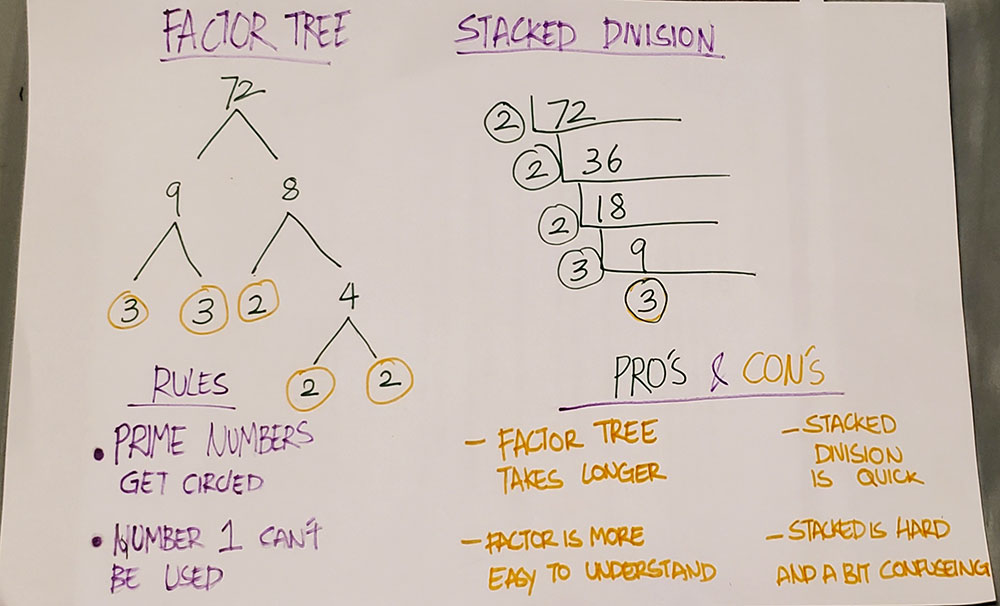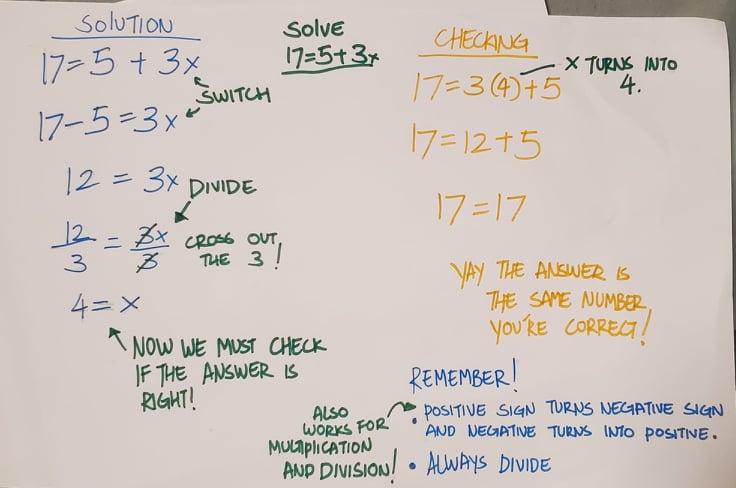Prime Factorization
Prime factorization is a way of expressing a number as a product of its prime factors. A prime number is a number that has exactly two factors, 1 and the number itself.
There are two methods, as you can see the image on is the factor tree method and the other is the stacked division method.
The factor tree it’s kind of like a tree and the main number is the stem of the tree and the smaller numbers are like branches. The factor tree is an intuitive method to understand the factors of a number. It is a special diagram where you find the factors of a number, then the factors of those numbers, etc until you can’t factor anymore. The ends are all the prime factors of the original number. Factor trees are easy and simple to understand but the process is long.
Stacked division looks like stairs but upside down. With stacked division we keep dividing the main number with prime numbers until we are left with a prime number. Use simple easy prime numbers such as 2,3, or 5. And continue to divide until you can’t anymore.
The methods may be different but they give the same answer, just go with any you are comfortable with.


